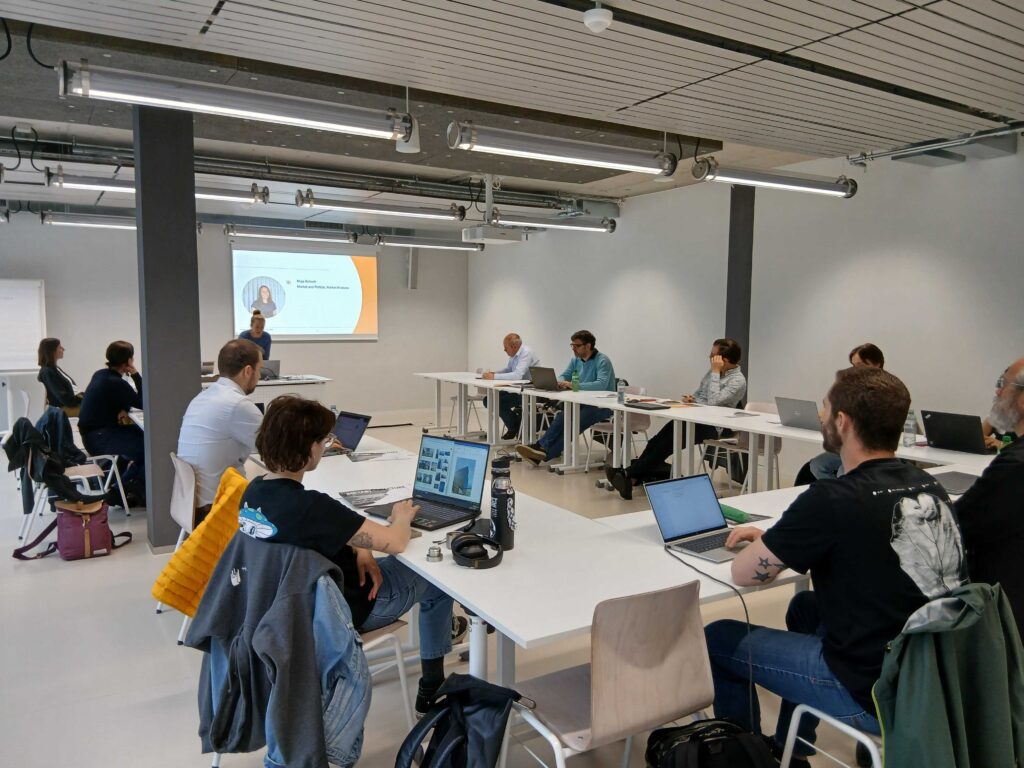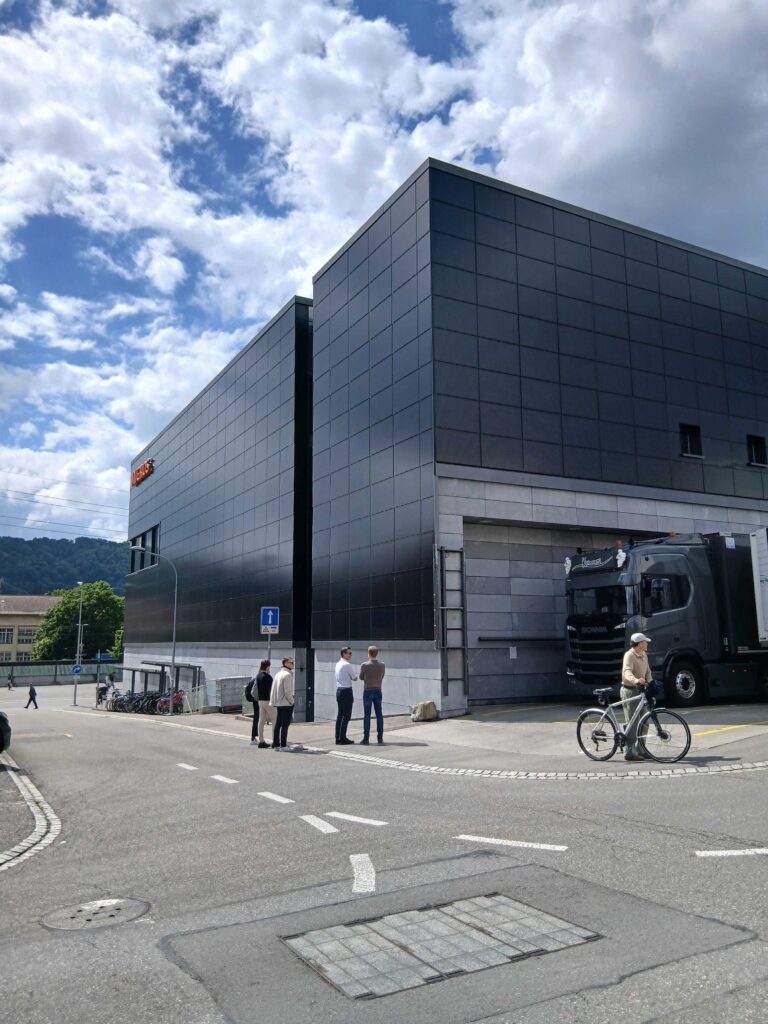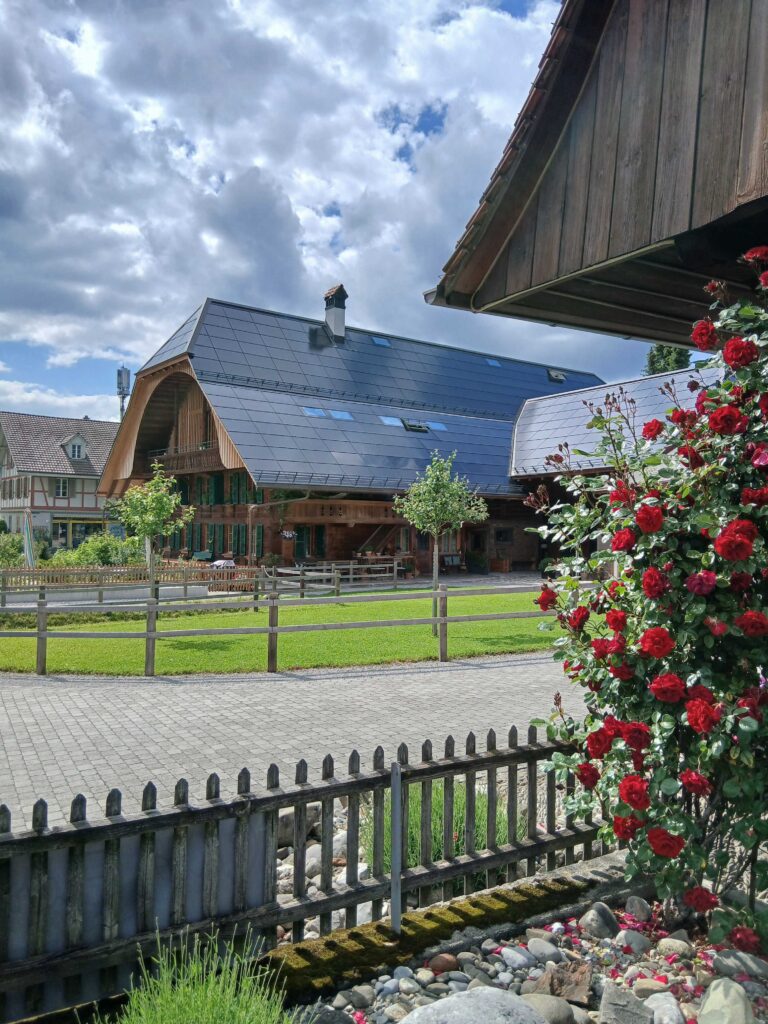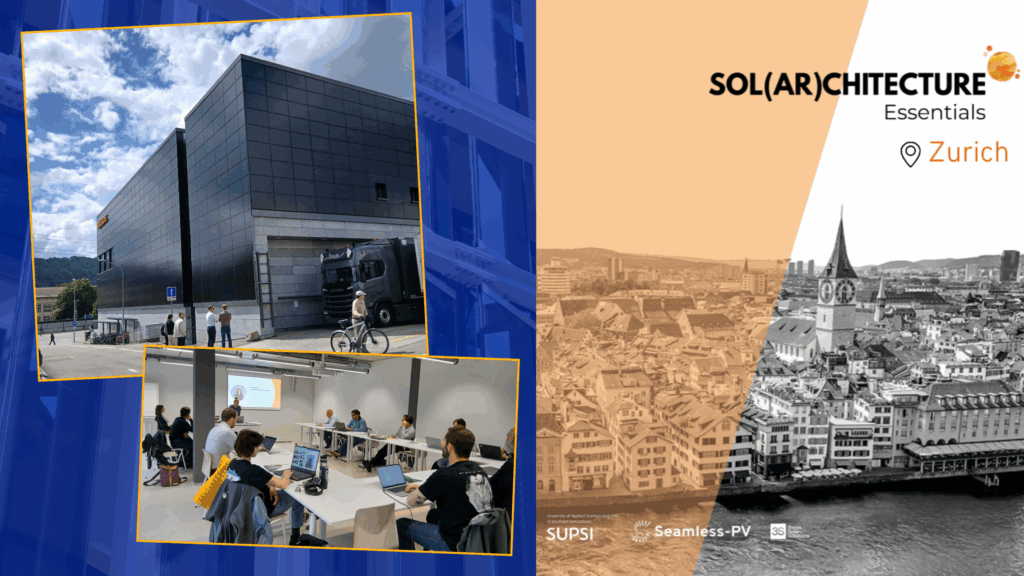OVERVIEW
The Solarchitecture – Essentials course, held in the vibrant city of Zurich, brought together 15 passionate professionals from across the architecture, glass and academic sectors. Over the course of three days, participants explored the principles and practices of solar-integrated building design through lectures, real-world case studies, and a hands-on workshop.
The program was designed to provide both foundational knowledge and practical experience, guiding attendees through the process of designing with solar technologies from concept to construction.
SUMMARY
Day 1: Introduction to Solar Architecture
Location: Fernfachhochschule (FFHS)
The first day of the course took place at the Fernfachhochschule (FFHS), focusing on the principles and theory and current challenges of building-integrated photovoltaics (BIPV). Participants were welcomed into an engaging learning environment that combined expert-led presentations, real-world case studies and interactive group
activities.
The day began with a welcome and introductory session by Pierluigi Bonomo (SUPSI), outlining the objectives and structure of the course and presenting a general overview and the vision behind the solar world. This was followed by Lena Kern (Swissolar), who provided an insightful overview of the Swiss solar market, highlighting current trends, industry dynamics and policy developments. Greta Battaglia (SUPSI) then showcased impactful case studies from solarchitecture.ch, illustrating how solar technology is being integrated into architectural design with both functional and aesthetic considerations. The focus then shifted to the fundamentals of solar technology.
Fabio Parolini (SUPSI) delivered a comprehensive session on the principles of photovoltaic cells and modules and the essential aspects of BIPV system design. Alberto Follo (SUPSI) introduced digital design and modeling workflows, covering solar potential analysis and BIM-based simulation processes. After lunch, the program transitioned to an interactive group activity titled “Strengths and Challenges of BIPV”. Participants were divided into small groups and tasked with identifying both the advantages (e.g., sustainability, energy efficiency, aesthetics) and the challenges (e.g., cost, maintenance, architectural integration) associated with BIPV.
This hands-on session included a post-it exercise and a plenary discussion where each group presented their findings on a shared whiteboard organised by themes. In the afternoon, the course returned to expert-led sessions with a focus on quality and regulatory aspects. Fabio Parolini (SUPSI) provided an in-depth analysis of technical requirements and current standards related to product certifications for BIPV systems.
Paolo Corti (SUPSI) discussed market conditions, process challenges and the cost-effectiveness of solar building investments, including life-cycle considerations.
To conclude the day, Lena Kern (Swissolar) explored the role of buildings within broader energy communities, touching on concepts such as ZEV (energy communities), VZEV, and LEG and how these models support the integration of solar energy into local infrastructures.

Day 2: Case Study Building Tours
Location: Zurich
The second day of the course was centred on real-world applications of building-integrated photovoltaics (BIPV), combining expert insights with immersive, hands-on learning experiences.
The morning began with two in-depth case study presentations: Karl Viridén (Viridén+Partner) introduced the first project, offering an overview of the building’s concept, site and design approach. He emphasised the importance of seamless BIPV integration, the benchmarking of photovoltaic materials against conventional building materials and the specific challenges encountered during the construction process. Elena Canosci (Sunage) followed with a second case study, exploring a different architectural and technological context. She echoed the relevance of BIPV integration, highlighting the technical, aesthetic and logistical considerations that shaped the project.
Each presentation included a Q&A session, giving participants the opportunity to engage directly with the experts and deepen their understanding of practical BIPV implementation. Following the presentations, participants took part in a group activity: Case Study Mapping, facilitated by SUPSI. The goal of this session was to analyze a real BIPV project through four key lenses:
- Architectural integration
- Technical performance
- Financial viability
- Sustainability impact
After a brief introduction to the selected case study, participants were divided into small teams. During the group work phase, each team evaluated the project based on their assigned criteria, identifying key challenges and opportunities. They then presented their findings and proposed improvements or alternative strategies.
Feedback was provided by the expert panel, with further discussion continuing over lunch.
In the afternoon, the group visited two exemplary BIPV buildings in Zurich to observe solar architecture in practice: The first stop was an apartment building on Hofwiesen and Rothstrasse, guided by Karl Viridén, who shared insights into the system design, material selection and performance metrics of the BIPV installation.
The second visit was to Dorflistrasse 11, led by Elena Canosci, who explained the building’s design rationale and BIPV integration strategy. These building tours offered participants a concrete understanding of how theoretical
principles translate into built environments, enhancing their practical knowledge and appreciation of solar-integrated architecture.
Day 3: Hands-On Workshop at 3S Swiss Solar Solutions
Location: Worb/Münsingen
The final day of the course took place at the facilities of 3S Swiss Solar Solutions, offering participants a comprehensive look into the industrial, technical and design dimensions of BIPV through a mix of presentations, visits to the factory and real-world case studies.
The morning opened with a company introduction, during which 3S presented its history, ongoing research collaborations and product offerings. This session provided a clear understanding of the company’s position within the BIPV landscape and its contributions to innovation in solar-integrated building materials.
This was followed by a session on key influencing factors in the BIPV planning process, offering insights into the parameters that shape decisions from early-stage design to implementation.
After a short break, participants engaged in a showroom activity designed to explore construction-related aspects of BIPV and the visit to the 3S production line, gaining firsthand insight into the manufacturing process of photovoltaic components. This immersive visit covered product development, advanced fabrication methods and quality control systems, showcasing how design becomes reality. Following lunch, the focus shifted to practical design tools with a session titled “Easy Mounting, Easy Planning”, introducing the 3S Designer platform. Participants learned how the tool supports efficient planning and integration of solar solutions in
architectural projects.
To conclude the day, participants visited a series of realised BIPV case studies by 3S, traveling from Worb to Münsingen. These site visits offered a direct, hands-on experience of completed solar architecture projects and how BIPV solutions perform in real-world settings.
The tour included:
- The Migros façade, showcasing how solar design can be harmonised with commercial architecture without compromising on aesthetics or functionality.
- A renovated farmhouse with traditional regional architecture, where the entire roof was replaced with BIPV modules. This project illustrated how solar technologies can be respectfully integrated into heritage-style buildings, preserving local identity while enhancing energy performance. These site visits provided a valuable opportunity to observe the outcomes of BIPV design and manufacturing processes previously discussed, reinforcing key course themes through direct observation and on-site discussion.



